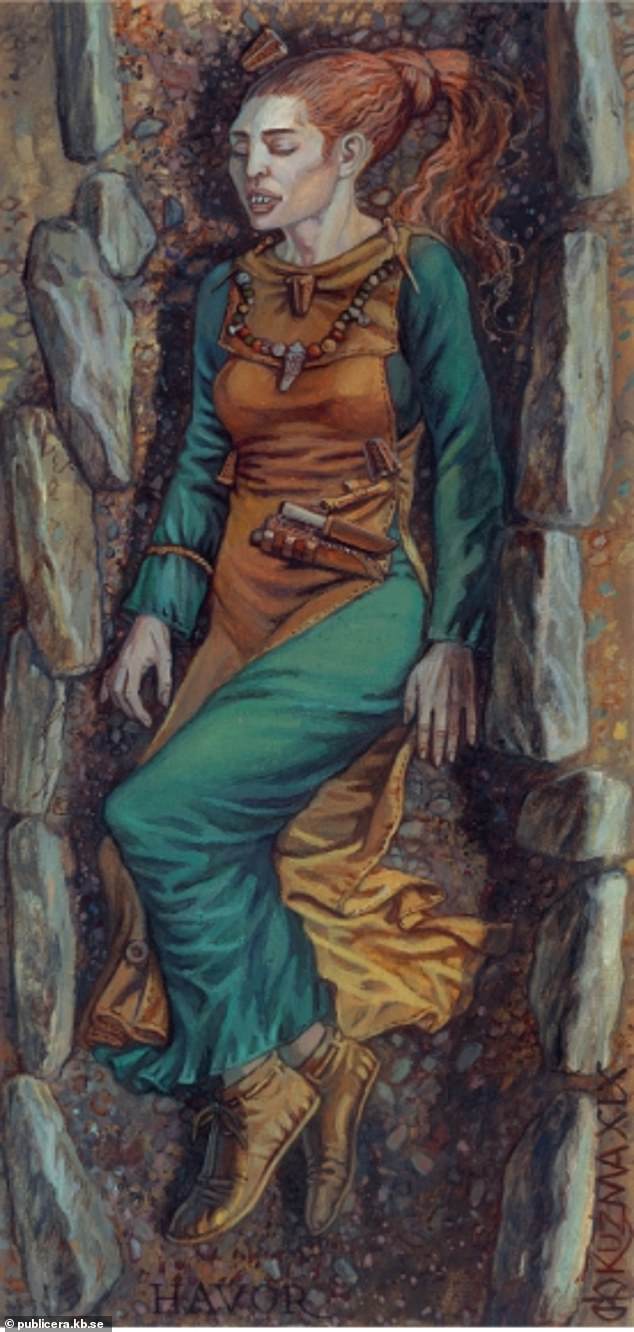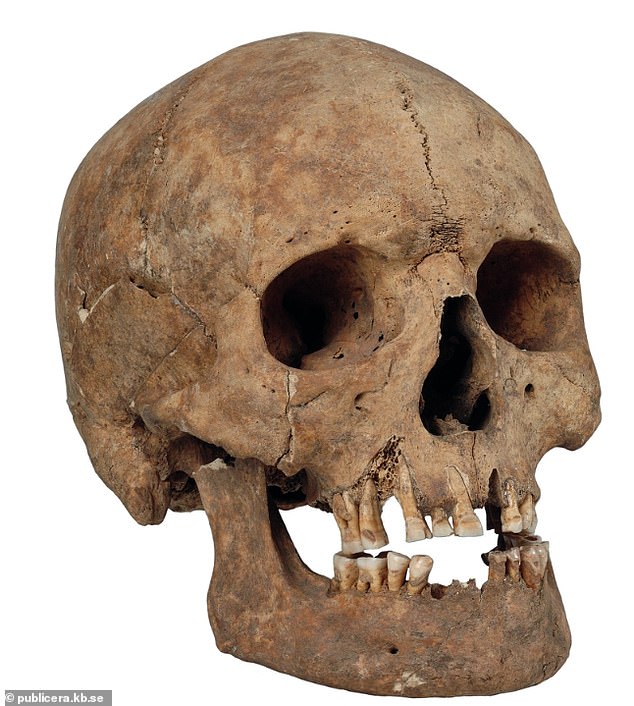Vikings may have practiced an ancient form of plastic surgery a thousand years ago, research suggests
Scientists in Sweden have made a discovery that suggests Viking women underwent cosmetic surgery 1,000 years ago.
A team of German researchers found three elongated skulls that were likely changed in the first year of the women’s lives, when their skulls were soft and pliable.
It’s possible that the Vikings elongated their skulls as a sign of status and beauty, the researchers said.
Cranial deformities were common in the Black Sea region and had previously only been identified in Mesoamerican, Amerindian and Eurasian cultures, making this the first time it was found in the Vikings.
Researchers found elongated skulls of three Viking women (one skull pictured) that had been deliberately modified in the first year of their lives

The researchers believe it is likely that the practice of skull modification was intended as a status symbol, demonstrating the success the families had in trading with other regions.
“We don’t know where these three women grew up and where their heads were deformed,” said Matthias Toplak, the expedition’s co-leader. Atlas Obscura.
“For example, whether their heads were deformed in early childhood in the Black Sea region, and how they came back to Gotland, is unclear,” he added.
Researchers believe the female’s skulls were likely altered in the first year of life, when the bones were still soft enough to be altered, by wrapping bandages around the infant’s head to elongate the skull.
However, if the Vikings used more serious techniques, such as using weights or straps, this could have affected their cognitive development.
The researchers clarified that they could not determine from the skulls whether this was the case, but Jesse Goldstein, chief of the Division of Pediatric Plastic Surgery, said the more severe approach could have disastrous consequences.
“If this approach was taken, it may have had negative consequences for brain function, especially if applied in early childhood,” he told Atlas, but added the caveat: “It is difficult to know for sure .’
Researchers think it is more likely that artificial skull deformation (ACD) was used to separate the women from others by showing that they had traveled.
“The human body is and represents a communication medium,” the researchers wrote in the studyand adds: ‘It has the ability to produce communications in a functionally complex structured way.’
Although the women could have used ACD as a symbol of beauty, it was far more likely that they were “considered as evidence of far-reaching trade contacts, and thus as signs of influence and success in trade,” Toplak said. LiveScience.

Researchers also discovered that the Vikings had filed their teeth (pictured) and modern experiments revealed that the same results could be achieved with a steel file
Researchers from the Viking Museum Haithabu and the University of Münster in Germany have used DNA analysis to reveal that the skulls come from the Scandinavian Viking Age on Gotland, an island of Sweden in the Baltic Sea.
Communities in Toulouse, France, according to early 20th century recordings, practiced ACD by using bands and cloths to deliberately adjust children’s heads – sometimes called the ‘Toulouse deformity’ or ‘bandeau’.
The local people of Vanuatu, an island nation in the Pacific Ocean, implement ACD to resemble their deity Ambat, who has an elongated skull and a long nose.
“We lengthen the heads of our children because it is our tradition, and it has its roots in the fundamental spiritual beliefs of our people,” the South Malakulan general said at the Australian Museum. website.
“We also see that people with elongated heads are more handsome or beautiful, and such long heads also indicate wisdom,” he added.
In addition to the skull modifications, the researchers also found that the Vikings employed the practice of filing their teeth, which could have been used to identify certain merchant groups.
The practice could also be applied as a right of initiation and modern experiments have established that a steel file achieves marks similar to those used by the Vikings.
Teeth filing and skull modification were practiced by groups around the world between 750 BC and 100 AD, including the Maya in Mexico and the Pracas civilization in present-day Peru.
Communities in Toulouse, France, according to early 20th century recordings, practiced ACD by using bands and cloths to deliberately adjust children’s heads – sometimes called the ‘Toulouse deformity’ or ‘bandeau’.
